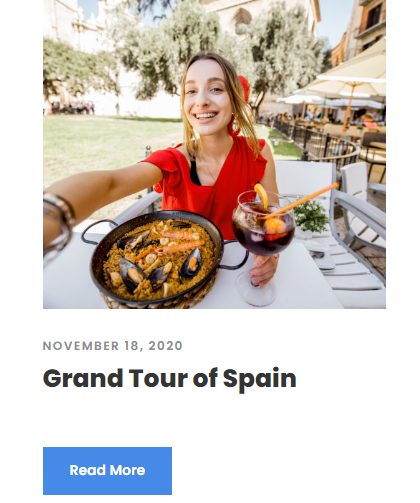Exploring the Flavors of Spain
Introduction
Spain is known for its rich and diverse culinary tradition. The country has a long history of food culture, with influences from the Romans, the Moors, and other cultures that have left their mark on Spanish cuisine. From paella to pintxos, from gazpacho to jamón, Spain is a food lover’s paradise. In this article, we will take you on a culinary journey through the different regions of Spain, highlighting some of the must-try dishes and ingredients.
Tapas
Tapas are small plates of food typically enjoyed as a snack or appetizer in Spain. The word “tapas” comes from the Spanish verb “tapar,” which means to cover, as it was originally a slice of bread or meat placed on top of a drink to keep flies out. Over time, tapas evolved into various small dishes served in bars and restaurants nationwide.
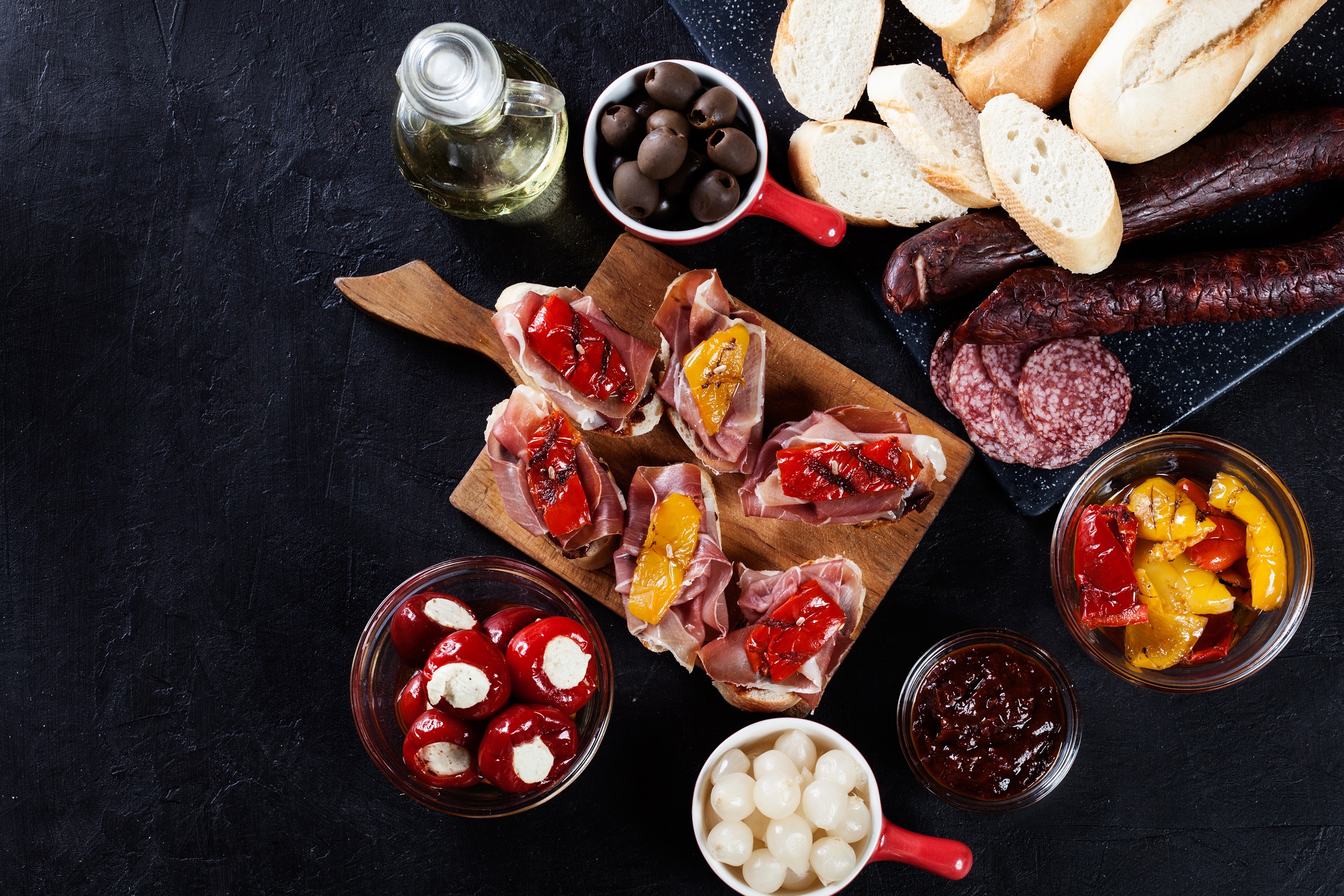
There are countless types of tapas, and the selection can vary depending on your region of Spain. Some of the most popular tapas include:
- Patatas bravas: fried potatoes served with a spicy tomato sauce
- Tortilla española: a thick omelet made with potatoes and onions
- Croquetas: small fried balls of dough filled with ham, cheese, or other ingredients
- Albóndigas: Spanish meatballs, typically made with beef and pork
- Gambas al ajillo: shrimp sautéed in garlic and olive oil
- Pimientos de padrón: small green peppers sautéed in olive oil and sprinkled with salt
- Pulpo a la gallega: Galician-style octopus, boiled and served with olive oil, paprika, and potatoes
In some bars, you can choose your tapas from a display case; in others, the tapas are brought to you as a surprise. Many bars also offer a “tapa and a drink” deal, where you can get a small plate of food and a beverage for a fixed price.
One of the joys of tapas is the opportunity to try various flavors and dishes in one sitting. You can order a few plates to share with friends or hop from bar to bar, trying different specialties. With so many options, tapas are a great way to explore Spain’s diverse and delicious cuisine.
Paella
Paella is a traditional Spanish dish originating in the Valencia region of eastern Spain. It is a rice dish typically served in a large, shallow pan called a paellera, often cooked over an open flame. Paella is a great option for a family-style meal, as it can be easily adapted to serve a large group.
The main ingredients of paella are rice, saffron, and various vegetables and meats. The traditional paella Valenciana is made with chicken, rabbit, and green beans, while seafood paella is created with an assortment of seafood like shrimp, mussels, and clams. Other common ingredients in paella include onions, garlic, bell peppers, and tomatoes.
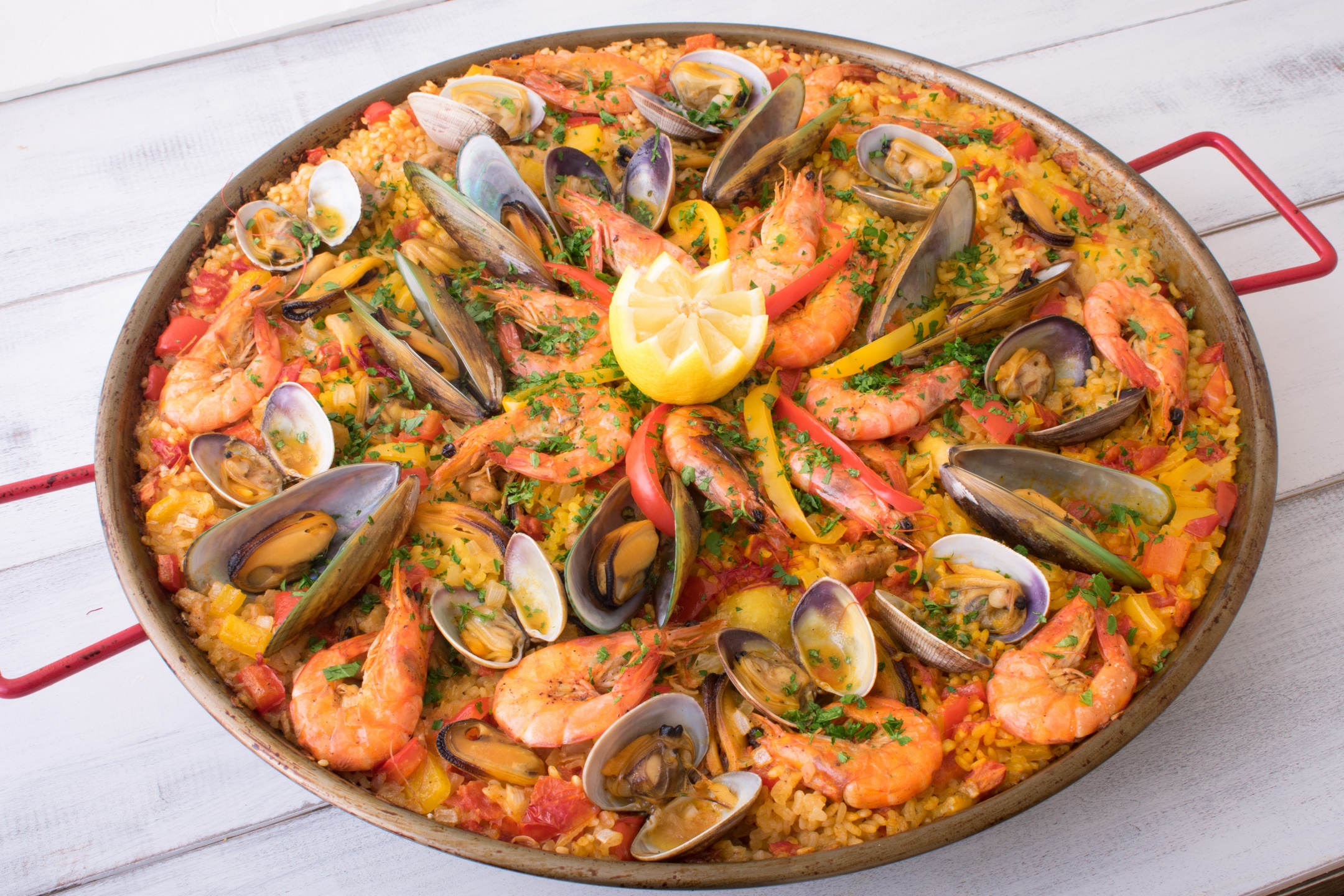
The rice used in paella is a unique variety of short-grain rice that absorbs more liquid than other types of rice. This makes the rice plump and tender, with a slightly chewy texture. Saffron, the most expensive spice in the world by weight, is added to give the dish its characteristic golden color and floral aroma. Combining saffron, vegetables, and meats creates a delicious broth that infuses the rice with flavor.
The ingredients are cooked together in the paellera to make paella, starting with the meat and vegetables and then adding the rice and liquid. The dish is then simmered until the liquid is absorbed and the rice is cooked. The resulting dish is a beautiful, flavorful medley of rice and ingredients.
In addition to the classic paella Valenciana and seafood paella, the dish has many variations. Some popular versions include black paella, which gets its dark color from squid ink, and mixed paella, which combines meat and seafood.
Paella is often served with a side of aioli, garlic mayonnaise, and a bottle of red wine. It is a perfect dish for sharing with friends and family and a must-try when visiting Spain.
Gazpacho
Gazpacho is a cold soup commonly consumed in Spain, particularly during the hot summer. It is a refreshing and healthy dish that is easy to prepare, making it a staple in Spanish cuisine.
The main ingredients in gazpacho are ripe tomatoes, cucumbers, bell peppers, onions, garlic, bread, olive oil, and vinegar. These ingredients are blended to create a smooth and creamy soup. Some variations of gazpacho include other ingredients, such as watermelon or almonds.
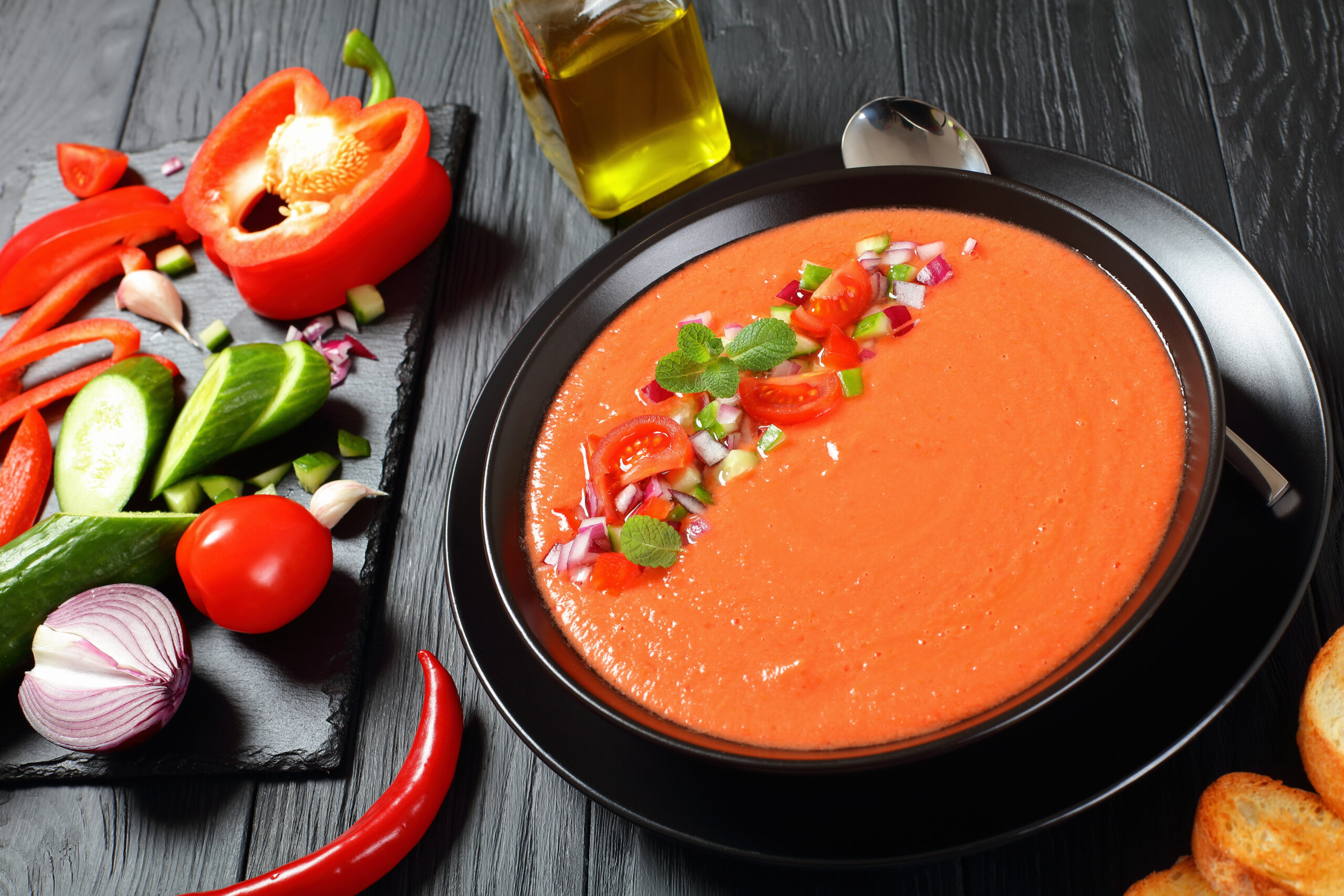
One of the most critical aspects of gazpacho is the quality of the ingredients. The tomatoes should be fully ripened, juicy, and sweet, as they provide the base flavor for the soup. The cucumbers should be firm and fresh, and the bell peppers should be bright and crisp. The bread used in gazpacho is usually stale, as it provides thickness and body to the soup without changing the flavor.
The soup is usually chilled before serving, as it is meant to be consumed cold. This helps to provide relief from the heat of the Spanish summer. Gazpacho is often served with garnishes, such as diced cucumber, croutons, or chopped parsley.
One of the reasons gazpacho is so famous in Spain is its simplicity. The ingredients are easy to find and prepare, and the soup can be made in advance and stored in the refrigerator until needed. It is also a healthy and low-fat dish, making it an excellent option for those watching their weight or trying to eat more vegetables.
Gazpacho is often enjoyed as a first course or a light lunch and is a perfect way to start a meal on a hot summer day. It is also an excellent option for those who want to try traditional Spanish cuisine without the heaviness of some more indulgent dishes.
Jamón
Jamón, also known as Spanish cured ham, is one of the most iconic foods in Spanish cuisine. It is a dry-cured ham made from a pig’s hind leg and is often considered a delicacy due to its rich and complex flavor.
There are two main types of Jamón: Jamón serrano and Jamón ibérico. Jamón serrano is made from white pigs and is typically less expensive than Jamón ibérico. Jamón ibérico, on the other hand, is made from black Iberian pigs and is known for its high quality and rich flavor. The pigs used to make Jamón ibérico are free-range and are often fed a diet of acorns, which gives the meat a distinct nutty flavor.
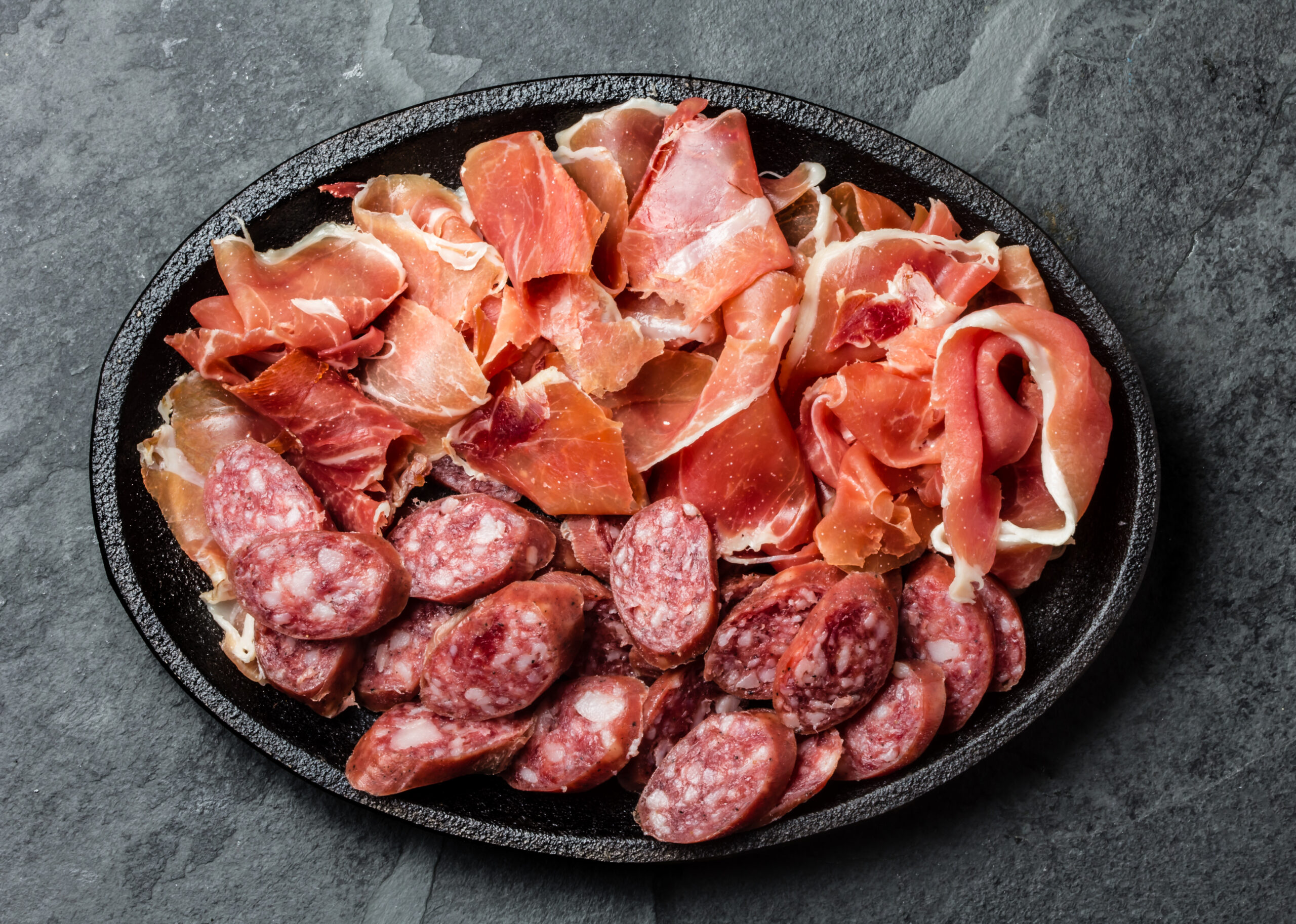
The process of making Jamón is a long and intricate one. First, the pig’s hind leg is covered in sea salt and left to cure for several weeks. The salt is then washed off, and the ham is hung in a cool, dry place to dry for several months. During this time, the ham will lose up to a third of its weight as the moisture evaporates. Curing and aging can take 12 months to several years, depending on the desired flavor and texture.
The resulting ham has a firm texture and a rich, nutty flavor. It is often served in thin slices and is a common ingredient in tapas dishes. Jamón is frequently paired with other Spanish ingredients, such as Manchego cheese, olives, and bread, to create a delicious snack.
In Spain, Jamón is not just a food but a cultural icon. It is a staple in Spanish cuisine and is often consumed on special occasions, such as weddings or holidays. Even entire stores are dedicated to selling Jamón, where customers can choose from various types and cuts.
If you’re visiting Spain, trying Jamón is a must. It is a unique and flavorful food that will leave a lasting impression on your taste buds.
Pintxos
Pintxos are small bites that are similar to tapas but are a specialty of the Basque Country. Pintxos are typically served on small slices of bread and held together with a toothpick. Some famous pintxos include:
- Gildas: skewers of green olives, anchovies, and pickled peppers.
- Txistorra: a type of Basque sausage.
- Tortilla de bacalao: a cod omelet.
- Pintxo de pulpo: octopus served on a slice of bread.
Churros
Churros are a beloved dessert in Spain, typically enjoyed for breakfast or as a late-night snack. Churros are made from a dough piped through a star-shaped nozzle and then deep-fried until crispy. The churros are then dusted with sugar and served with thick hot chocolate for dipping.
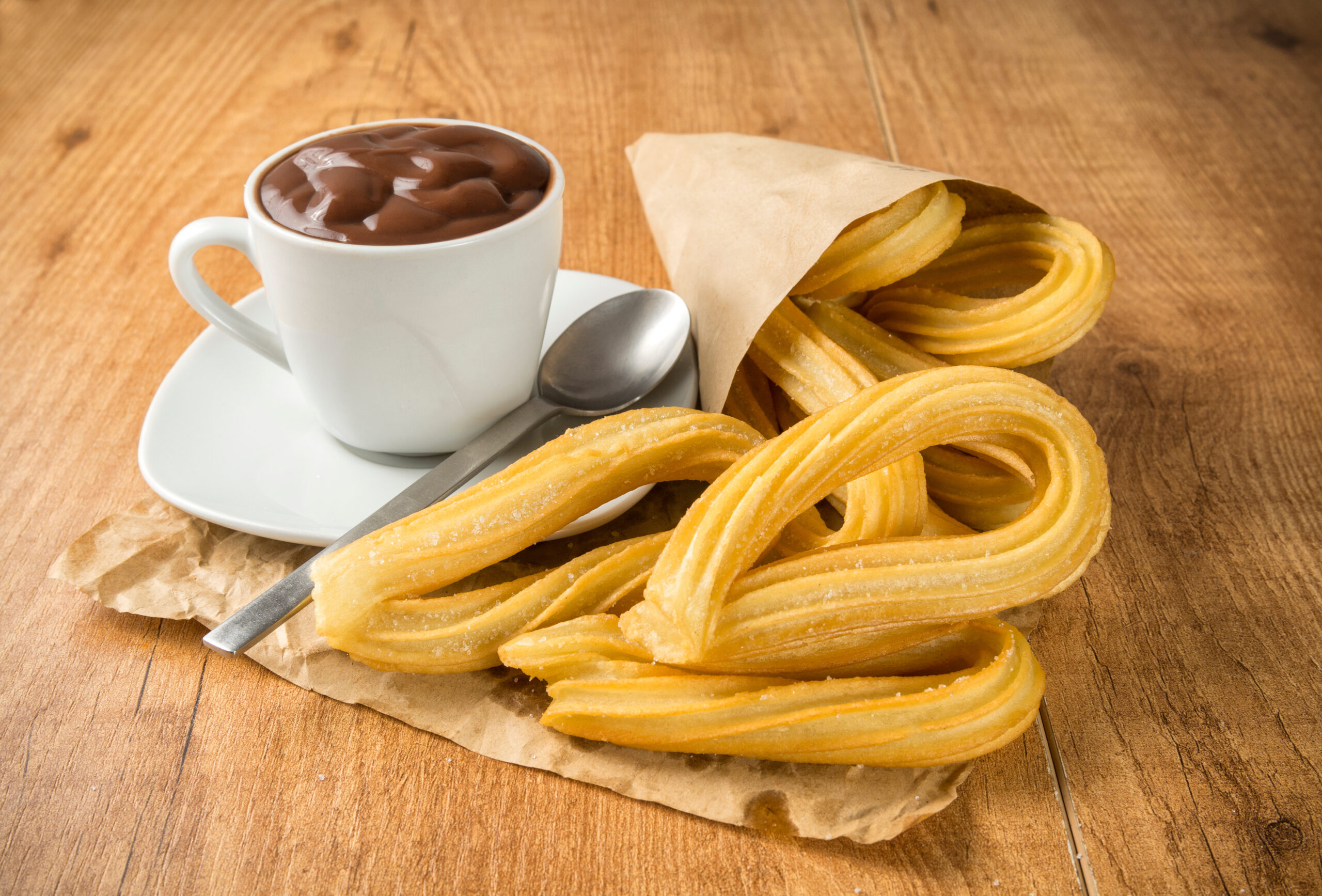
Cheeses
Spain has a rich cheese-making tradition, with dozens of different types of cheese made throughout the country. Some famous Spanish cheeses include:
- Manchego is a sheep’s milk cheese aged for several months with a rich, nutty flavor.
- Cabrales is a blue cheese that is made in the mountains of Asturias.
- Idiazábal is a smoked cheese made from sheep’s milk with a smoky, slightly sweet flavor.
- Mahón is a cow’s milk cheese that has aged for several months and has a tangy flavor.
Wines
Spain is one of the largest wine-producing countries in the world, with a variety of different wine regions that each produce unique and delicious wines. Some of the most famous Spanish wines include:
- Rioja is a red wine made from the Tempranillo grape and aged in oak barrels.
- Priorat is a red wine made from Grenache and Carignan grapes known for its intense, complex flavors.
- Cava is a sparkling wine made using the same method as Champagne.
- Albariño is a white wine made in the Galicia region with a crisp, refreshing flavor.

Conclusion
Spain’s cuisine is diverse and delicious, with various dishes, ingredients, and regional specialties sure to please any food lover. From the small plates of tapas to the hearty paellas, from the refreshing gazpacho to the decadent churros, from the rich jamón to the complex wines, Spain has something for everyone. So the next time you’re in Spain, indulge in the country’s culinary delights – your taste buds will thank you!

